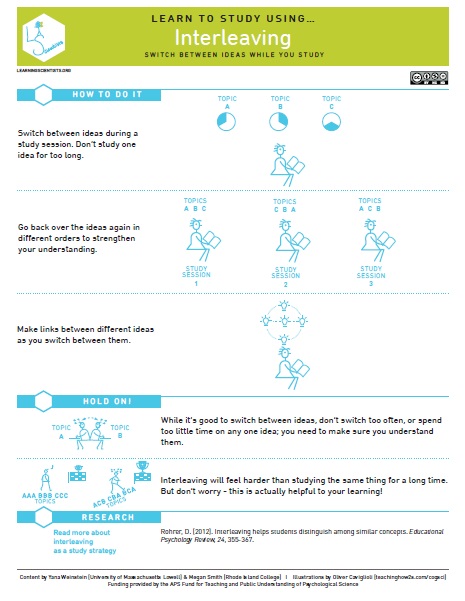This is the fifth post in a series looking at the most effective ways to revise, based on the work of The Learning Scientists. The Learning Scientists are cognitive psychologists who want to make scientific research on learning more accessible to students and teachers. Their aim is to motivate students to study and increase the use of effective study and teaching strategies that are backed by research. I’ve met Yana Weinstein PhD at an education conference in Southampton last week – she’s the real deal!
Read all the revision posts here.
Interleaving: what is it?
Interleaving is when you switch between different topics in your revision sessions.
Interleaving: why?
Switching between topics helps your brain to see the similarities and differences between them. It helps to avoid confusion and also allows you to make links between different areas of study, which aids retention. Finally, it’s much harder than studying just one topic for a long time, and this difficulty means your brain has to work harder, which means it remembers more.
Interleaving: how do I do it?
It’s more effective to revise one topic for a short time, making sure you have a good grasp of it, then switch to another topic, then another. When you come back to the topics again as part of your spaced practice, review them in a different order. Try to look for the links and connections between topics as you study them.
Interleaving: next steps
Don’t switch too often – you’ll get confused! Three separate topics in one revision session is usually about the right balance. And don’t switch too quickly – make sure you’ve fully understood what you’re studying before you move on to the next topic.

Pingback: How to do revision right | The Headteacher's Blog